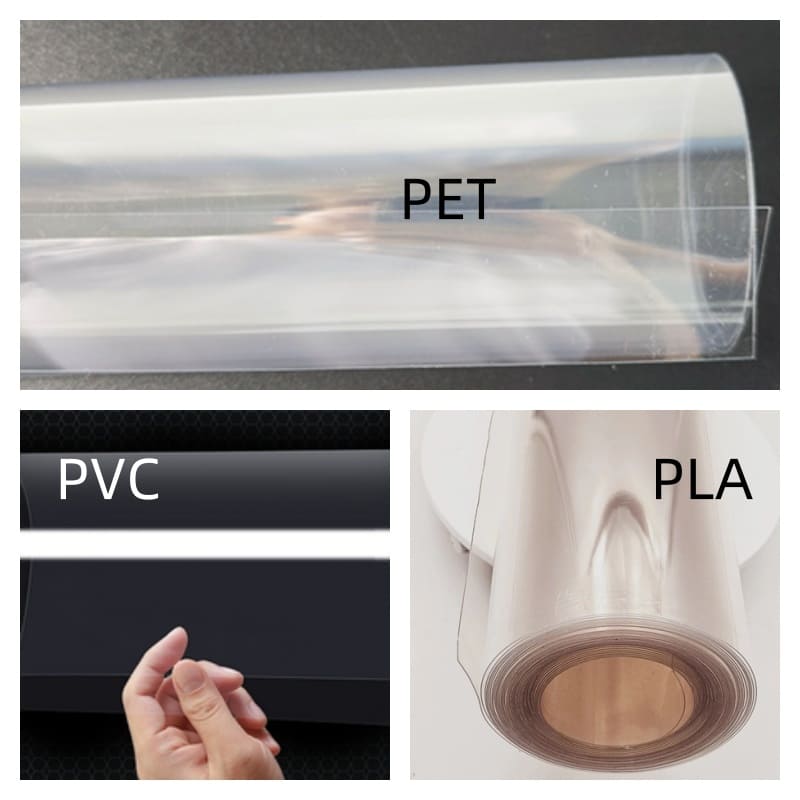Rethinking Clamshells for a Greener Future
Clamshell packaging—the hinged plastic containers used for everything from electronics to fresh produce—has long been criticized for its environmental footprint. While it excels in product protection and tamper resistance, its sustainability is a growing concern. This article explores whether clamshell packaging can be made truly sustainable and what brands, manufacturers, and consumers can do to drive positive change.
Beyond Recycling: Why Traditional Clamshells Fall Short
1. Material Complexity & Its Impact
Most clamshells are made from PET (polyethylene terephthalate) or PVC, both of which pose environmental challenges:
- Thermoformed PET: Thinner and more brittle than bottle-grade PET, making it harder to recycle.
- PVC: Contains chlorine, releasing toxic dioxins when incinerated—banned in EU food-contact applications since 2021.
- Hybrid Materials: Adhesives, paper inserts, and multi-layer laminates make separation nearly impossible, reducing recyclability.
2. Recycling Barriers: The Bigger Picture
- Low Collection Rates: Only 30% of U.S. curbside programs accept clamshells, and even fewer process them effectively.
- Contamination Risks: Labels, food residue, and ink coatings often disqualify clamshells from recycling streams.
- High Processing Costs: The expense of recycling thermoformed PET exceeds the cost of producing new plastic, limiting industry incentives.
3. Hidden Environmental Costs
Clamshell packaging has a larger carbon footprint than many realize:
- Energy-Intensive Manufacturing: The thermoforming process consumes more energy than alternative packaging formats.
- Logistics & Transportation: Bulky designs increase emissions in shipping, even though the material itself is lightweight.
- End-of-Life Realities: Many clamshells are landfilled or incinerated, contributing to long-term pollution.
Beyond Recycling: Innovations in Sustainable Clamshell Packaging
1. Moving Towards Mono-Material Designs
Switching to 100% PET or PP (without adhesives or mixed layers) makes recycling easier. For example, Blistera’s EcoClams use laser-etched branding instead of glue-based labels, ensuring recyclability.
2. Next-Gen Bio-Based and Compostable Materials
- PLA (Polylactic Acid): A cornstarch-based alternative that is industrially compostable.
- Sugarcane & Bamboo Fiber: These renewable plant-based materials reduce reliance on fossil fuels.
- Mycelium Packaging: Mushroom-based packaging paired with recyclable PET shells provides a compostable alternative.
3. The Rise of Circular Economy Models
Forward-thinking brands are investing in closed-loop recycling programs that:
✅ Collect and remanufacture used clamshells into new ones. ✅ Support Extended Producer Responsibility (EPR) programs, ensuring brands take accountability for their packaging waste. ✅ Encourage refillable and reusable packaging models, particularly in cosmetics and premium goods industries.
4. The Digital Revolution in Packaging
Emerging smart packaging technologies are changing how we recycle clamshells:
- Chemical Recycling: Breaks PET into its original monomers for infinite reuse.
- Digital Watermarking: Helps sorting machines accurately identify clamshell materials for better processing.
- QR Codes & Smart Labels: Provide disposal instructions to consumers, boosting responsible waste management.


Blistera’s Approach to Sustainable Clamshell Packaging
At Blistera, we believe sustainability is about more than recyclability—it’s about rethinking the entire lifecycle of packaging. Our innovations include:
✅ GreenClams: Made from 80% post-consumer recycled rPET, fully recyclable in standard streams.
✅ BioShell: Compostable PLA clamshells certified for food and pharmaceutical use.
✅ SmartLock Design: Combines tamper evidence with easy-open tabs to minimize frustration and waste.
Rethinking Clamshell Sustainability: A Brand’s Guide
| Factor | Sustainable Clamshell | Traditional Clamshell |
|---|---|---|
| Material | Mono-PET, PLA, or plant-based fibers | PVC or mixed-material laminates |
| Recyclability | Widely accepted in curbside programs | Limited to no recycling options |
| Design | Easy-open features, reusable hinges | Sealed with adhesives, single-use |
| End-of-Life | Compostable or part of closed-loop systems | Landfill or incineration |
Policy & Consumer Demand Are Driving Change
Regulations and shifting consumer behavior are accelerating sustainable packaging adoption:
- EU Single-Use Plastics Directive: Phasing out non-recyclable clamshells and taxing waste-heavy packaging.
- California SB 54: Requires 100% recyclable or compostable packaging by 2032.
- Consumer Expectations: 68% of buyers prefer sustainable packaging, according to Nielsen’s 2024 report.
The Path Forward: How Brands Can Lead the Change
- Rethink Materials: Move towards mono-material PET, PP, or certified compostable alternatives.
- Improve Recycling Accessibility: Collaborate with waste management partners to increase collection & processing rates.
- Educate & Engage Consumers: Use QR codes & digital tools to guide proper disposal and encourage responsible use.
- Adopt Circular Business Models: Implement take-back programs and reusable packaging solutions to reduce waste.
The Future of Clamshell Packaging
Sustainability isn’t about eliminating clamshells—it’s about reinventing them. Through bio-based materials, intelligent design, and circular economy principles, brands can ensure their packaging meets environmental goals without compromising protection or functionality.
Let’s build a sustainable packaging future together.
🔗 Explore Blistera’s Eco-Clamshell Solutions → [Visit Our Sustainable Packaging Hub]
